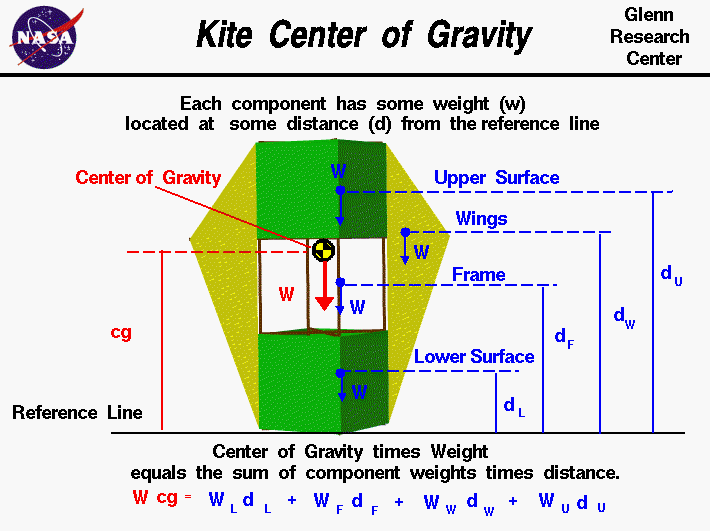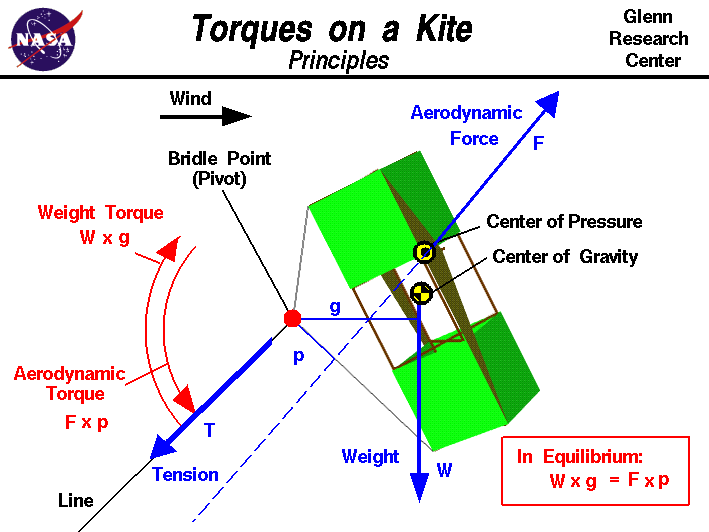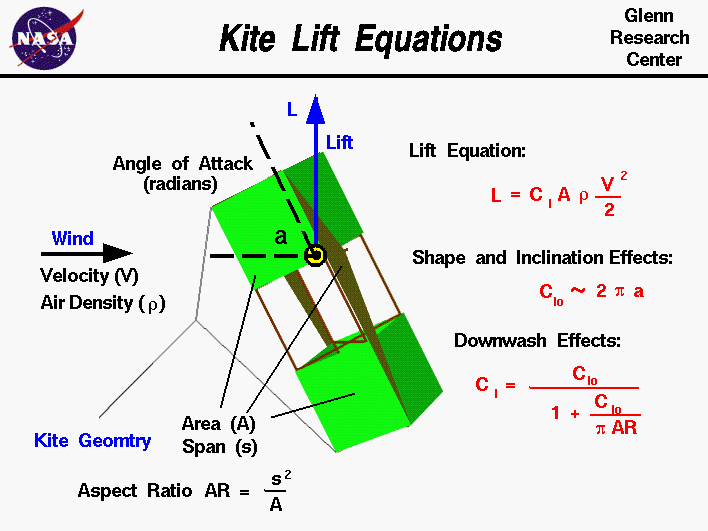The first human made heavier-than-air device to take flight 2800 years ago, and the pioneer to the modern aircraft. Kite is a flying tethered aircraft which works under many principals, many of them can be clearly explained in Physics. There are several factors which influence the kite behaviour while flying in the air. These are the main factors:
· Lift
· Drag
· Weight
· Tension
· Torques
In this introduction, we will explain each of the above factors and how it affects our kite behaviour. At the end, we also provide a definitive field test on our own kite and how we predicted its behaviour using Maple 14 Software.
Lift
This is one of the most important aspects on kites, since it affects how high and how fast a kite can fly.
Lift occurs when a moving flow of air (in this case wind) is turned on a solid object. The flow is turned in one direction, and then lift is generated in the opposite direction. This has the same principle as the Newton’s Third Law of action and reaction. When there is a lift there has to be other forces that is acting on the body of the kite, that is exactly right since kite is included as an airfoil surface and there has to be air resistance acting the opposite direction of the kite.
Drag
Drag is the force that is acting on the opposite direction of the relative motion of an object. Drag force depends on the velocity, surface area, and the density of the air. It can be explained through a formula.
In order to make our kite stable when flying, we don’t need to minimize too much drag because our kite does not fly level, it stays up in the air. We can say that in order to get a stationary flying kite, the force of lift and drag must be equal and opposite to the force exerted by the tension of line pulling downwards.
Weight
 |
| The bridal point must be placed exactly at the center of mass. |
The weight is the force acting downwards exerted by the gravitational force. The weight is also the opposite force of lift force (as shown in the picture). Our kite has to be light enough to be able to fly and strong enough to be able to withstand the impact when crashes occur. The center of weight’s distribution, where the force of gravity can be considered to act is called “The Center of Gravity. This point is crucial to our kite since it corresponds to the placement of the bridal point.
If there is more weight force acting downwards then there has to be more lift force required to fly the kite, more lift means more wind.
Tension
 |
| A demonstration in how tension works on a "tug of war" |
Tension is the pulling force exerted by a string, cable, chain, or similar object attached on another object. In our kite, the tension force is provided through our string tethered to our kite. The tension force is also one of the most crucial aspects in our kite, in order to get a stationary flight, we need to balance the tension force with the drag and lift force. During our test flight, the tension of the string kept changing over period of time and we needed to adjust our position to somehow release the tension caused by the wind.
Torques
 |
| This is how torques affect the movement of a kite |
This force is by far one of the hardest force to be stabilized at the test flight. Torque, also called moment of force, is the tendency of a force to rotate an object about an axis or pivot point. Torque can also be called a twist, just as a force is push or pull.
The kite is considered to be stable if the overall torque is zero, as a result of the counter forces such as tension, lift, and drag. In kite, the net torque is located approximately at the bridle point, because of the torques created by the weight and other forces. If a kite is naturally returns to an equilibrium condition when it is disturbed, the kite can also be called stable. The placement of the bridle point is very crucial for test flight because the net torque has to be countered by the tension force.








Thanks for the info!
ReplyDeleteThis is really helpful for my experiment.